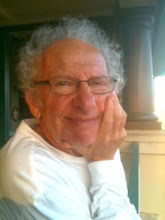Answers below:The 2008 Senatorial Election in Minnesota was predicted to be a "statistical dead heat" and has turned out to be nearly a tie.
The results, according to the Minnesota Secretary of State,
http://www.sos.state.mn.us , are:
Coleman, Republican: 1 211 538
Franken, DFL : 1 211 196
Barkley, Independence: 437 376
Minor Parties: 25 164
The eligible voters are: 3 741 514 (not all eligible voters are registered). Minnesota State Law mandates a recount if the difference in the two leading candidates is less than 0.5%
of all votes cast. The losing candidate may waive this if he or she does so in writing. I don't think Franken is likeley to do so (although Coleman has suggested it).
Questions: is an automatic recount mandated in this case?
What percentage of the total votes cast did each of Coleman, Franken and Barkley get? Express as a percentage, with three decimal places, for example, 43.xxx%
Compare to pre-election polls, which gave Franken 43%, Coleman 36% and Barkley 16% with a sampling error of plus or minus 5%.
If you go to the Secretary of State website and look at the Recount Manual, you will see (page 8) many examples of mis-marked ballots. If the intention of the voter is clear, such ballots, which optical scan machines will not count, can be counted by hand. In my experience, about 1% of student multiple choice exams are defective. If that is true in this case, how many mismarked ballots might there be?
What percentage of eligible voters actually voted?
-------------------------------------
The total number of voters was: 2 885 274
The difference between Coleman and Franken was 342 votes, this is o.012 percent, less than the 0.500 percent required for a mandatory recount.
The percentages were Coleman 41.991%
Franken 41.978%
Barkley 15.158%
Polls predicted Franken would get 38 to 48%, Coleman 31 to 41%, and Barkley 11 to 21%. The sampling error margins are approximate, Coleman was at the high end of the predicted range, the other two candidates within the predicted range.
There might be about about 29 000 mis-marked ballots.
77% of the eligible voters actually voted. The percentage of registered voters is higher, since not all eligible voters are registered.
